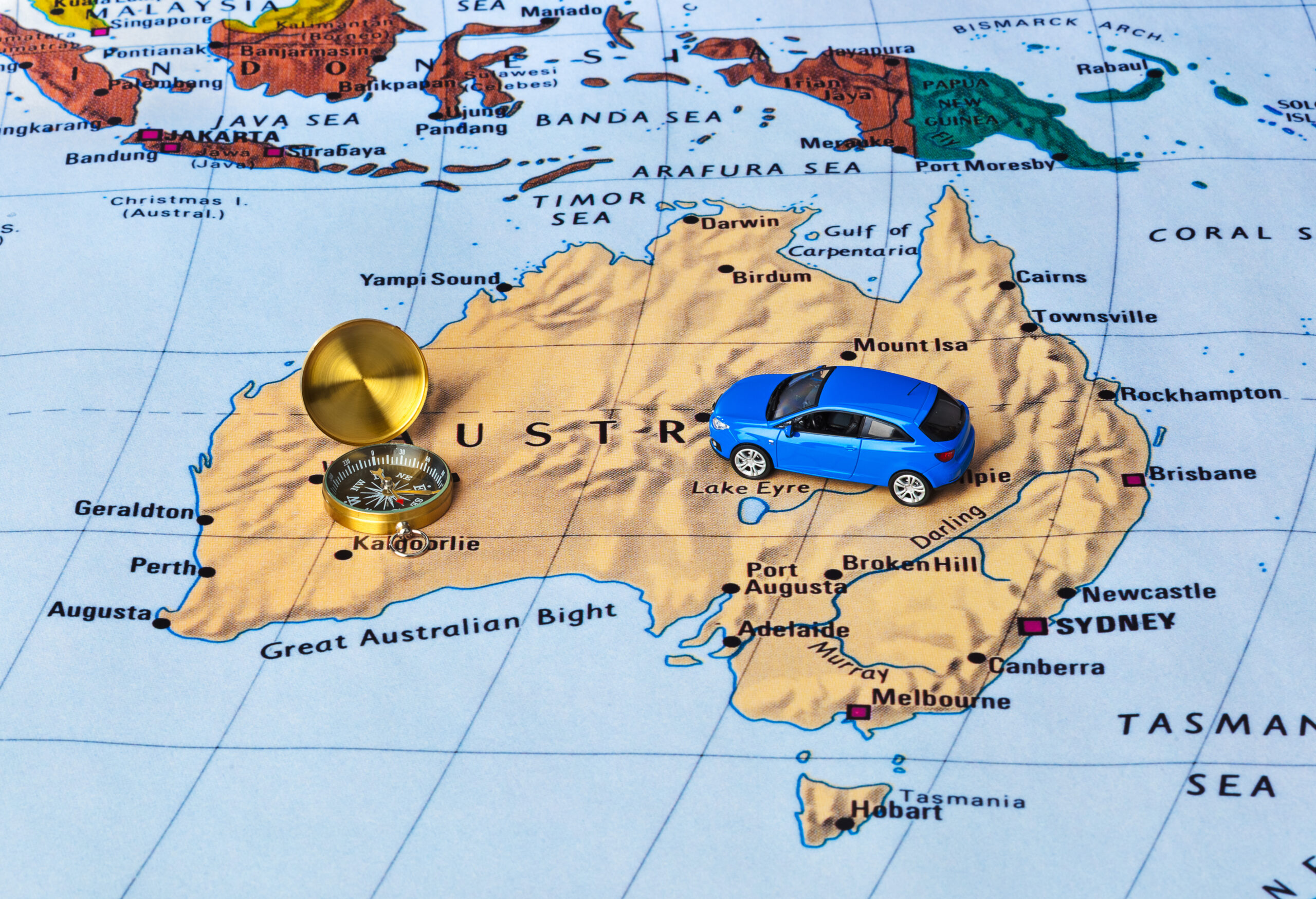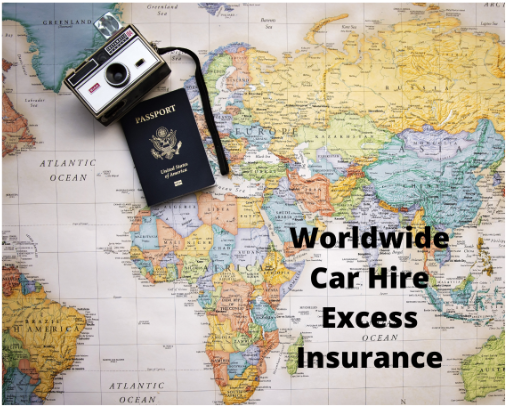Yes. Insurance for a single day is available.
Ultimate Guide to Renting a Car in Australia: Tips & Best Deals
PUBLISHED ON Feb, 27 2024
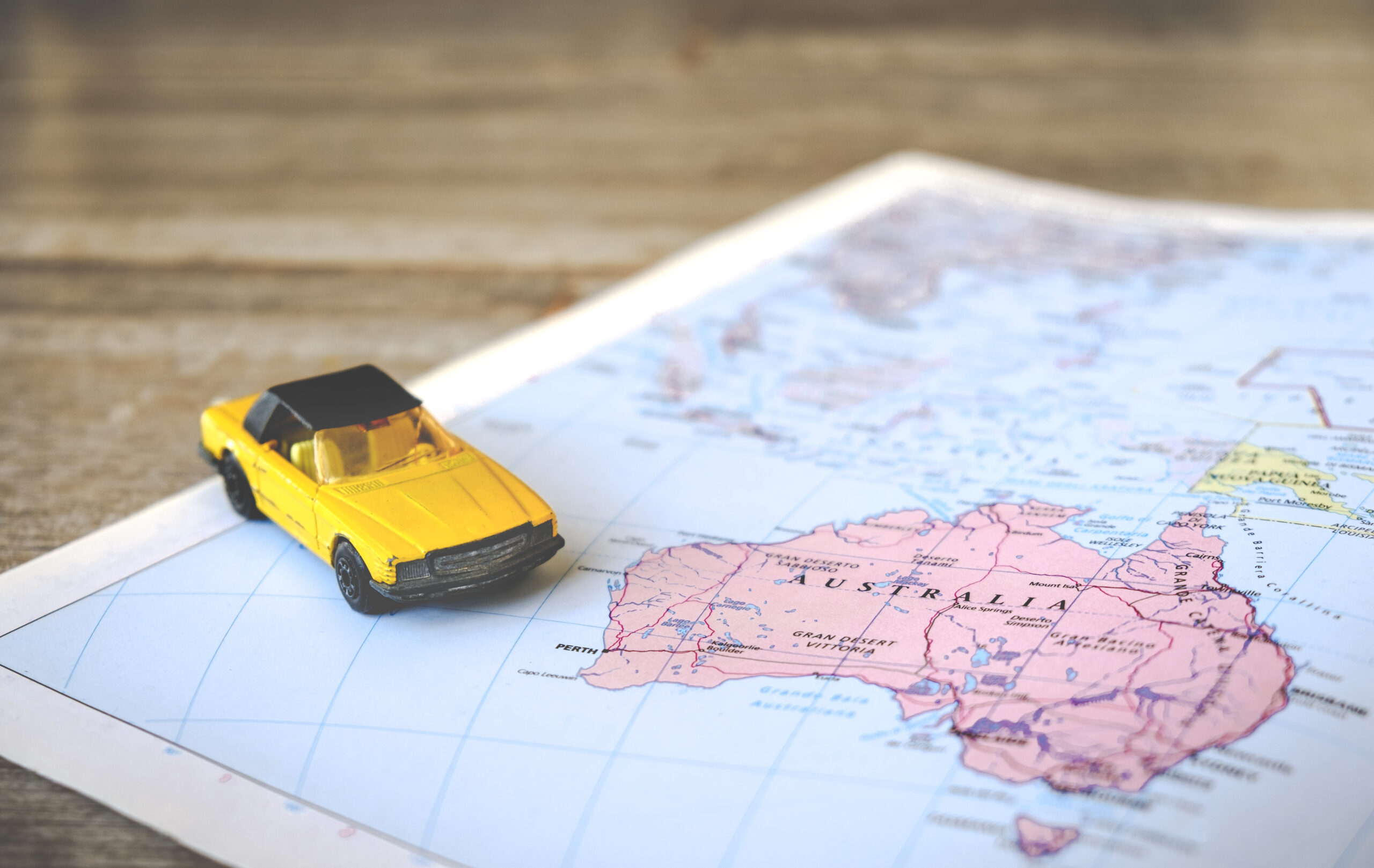
Need to rent a car in Australia? Whether road-tripping the Great Ocean Road or navigating city streets, this guide simplifies your car rental process. Find out what costs to expect, legal requirements, and how to choose the right car for your journey when renting a car in Australia. Avoid rental hiccups with our straightforward, practical advice perfectly geared for your Australian adventure.
Key Takeaways
- Australia offers a diverse range of car rental companies and vehicles, with the Mini type as the most popular choice for its compact efficiency, and options for insurance in rental rates, including a Collision Damage Waiver and Theft Protection.
- Eligibility for renting a car requires the driver to be at least 21 years old, with a full unrestricted license held for a minimum of 12 months; drivers under 25 may incur a young driver surcharge, and an International Driving Permit is needed if the license is not in English.
- For a smooth rental experience, it’s important to understand rental agreements, fuel policies, and to plan for the route by inspecting the vehicle before use, being prepared for remote travel, and considering booking in advance for better deals.
Navigating Car Rental Options in Australia
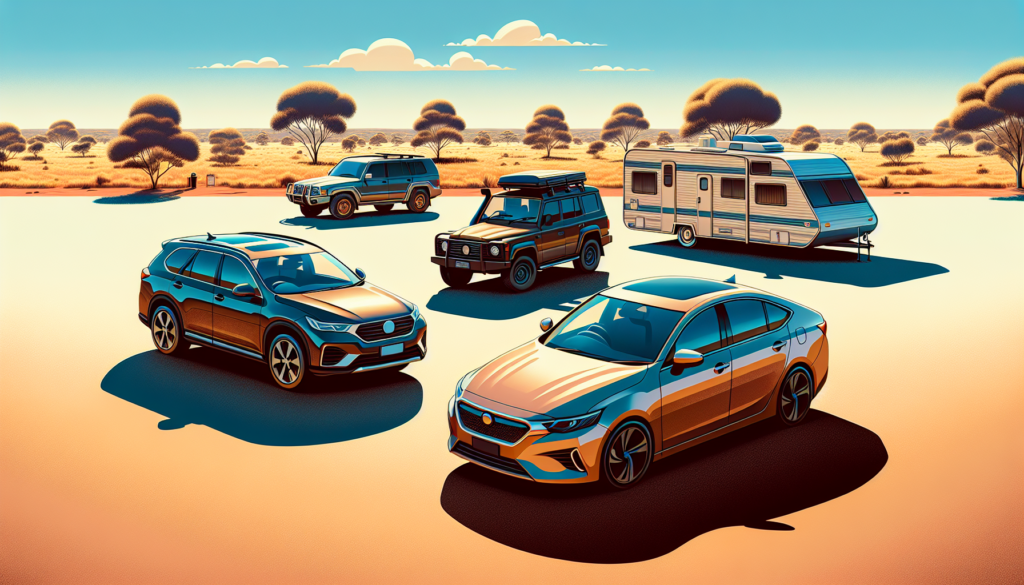
Variety of car rental options in Australia
Australia greets tourists with a plethora of Australia car rentals options, each catering to different budgets and preferences. With over 3,121 operators in the industry, you are spoiled for choice when it comes to picking a car rental company. Reputable brands such as: Avis, Budget, Enterprise, Europcar, Hertz and Thrifty, provide a diverse selection, making the Australian car rental market one of the most competitive worldwide.
The most frequently booked vehicle type is the Mini, which may be a Kia Carnival or a similar small car model. This compact and efficient vehicle is an excellent choice for travelers seeking to explore Australia’s cities, wide open spaces, and natural scenery.
Choosing the Right Vehicle for Your Trip
Choosing the right vehicle for your trip in Australia should align with your budget and the number of people traveling. Solo travelers or couples, particularly those planning a mix of camping and hostel stays, could find station wagons a cost-effective option. With a daily rate starting at $35 plus insurance, these vehicles offer affordability without compromising on comfort.
For those requiring more comfort on extended trips or traveling in larger groups, small campervans like the Toyota Tarago/Estima or standard campervans make a suitable choice. These vehicles come with amenities such as: kitchen sinks, refrigerators, gas stoves, water tanks, providing a self-contained traveling experience. The average daily rates for these vehicles range from $40 to $50 plus insurance, but the convenience and comfort they offer make them worth the cost.
Understanding Rental Packages
Understanding rental packages is key to getting the most out of your car rental experience. The cost of renting a car in Australia is influenced by factors like the type of car and the duration of the rental. For instance, economy vehicles are typically the most affordable option, whereas larger or luxury cars are more expensive. Renting for a longer period usually results in lower daily rates, with some companies providing discounts for weekly or monthly rentals.
Average daily rental prices can fluctuate from $20 to $120, influenced by factors such as location, type of vehicle, and time of year. For example, a lower-end vehicle may cost an average of $100 to $200 for a 5-day rental, while a luxury car or SUV can go from $400 to $500 for the same rental period. Therefore, always consider these factors when planning your budget, and be aware of potential extra fees, such as charges per kilometre driven, which can significantly add to the total rental cost.
Major Pickup and Drop-off Locations

Major pickup and drop-off locations for car rentals in Australia
Major cities such as Melbourne, Sydney, and Brisbane are common locations for car rental pick-ups in Australia, providing convenient access right after passing through customs. The flexibility of car rentals also extends to drop-off locations, allowing you to return the car in other cities or even different states.
This flexibility makes it easier for you to plan your journey without having to loop back to your pickup location, making your Australian road trip a breeze, even if you choose to rely on public transport.
Essential Requirements for Renting a Car
Before you can start your journey, there are some essential requirements to meet:
- The minimum age requirement for renting a car in Australia is 21 years old, and you must have held a full, unrestricted driver’s license for a minimum of 12 months.
- If you’re under 25 years of age, you may be subject to a young driver’s surcharge.
- On the other side of the spectrum, many rental car suppliers set a maximum age limit of 75 years old for renting a car in Australia.
Most car rental companies generally accept any driver’s license that is printed in English. However, if your license is not in English, you will need an International Driving Permit (IDP) alongside your original driver’s license. Licenses from New Zealand, the United States, or the United Kingdom are usually accepted when renting a car in Australia. If you hold a license from another country, it’s best to verify acceptance with the rental company’s terms and conditions.
Age Considerations and Young Driver Surcharge
While car rentals provide an excellent option for exploring Australia, it’s essential to be aware of age-related considerations. If you are under 25, you may have to pay an extra fee, known as a young driver surcharge, when renting a car. This surcharge is added on top of the daily rental rate. On the other hand, some rental car providers may request drivers over 75 to provide a medical certificate indicating they are fit to drive.
Knowing these requirements can help you plan your budget and avoid unexpected costs.
License and International Driving Permit Guidelines
Having a valid driver’s license is a basic requirement for car rental in Australia. Car rental providers require drivers to possess a full, unrestricted driver’s license to rent a vehicle. Provisional license holders are only eligible to rent a car if they are at least 21 years old and have held their provisional license for a minimum of 12 months, subject to the terms of the rental provider.
You will need an International Driving Permit if your license is not in English. This permit acts as a translation of your license and is recognized internationally. The IDP serves as a legally recognized translation and must be presented along with the original driver’s license from your home country.
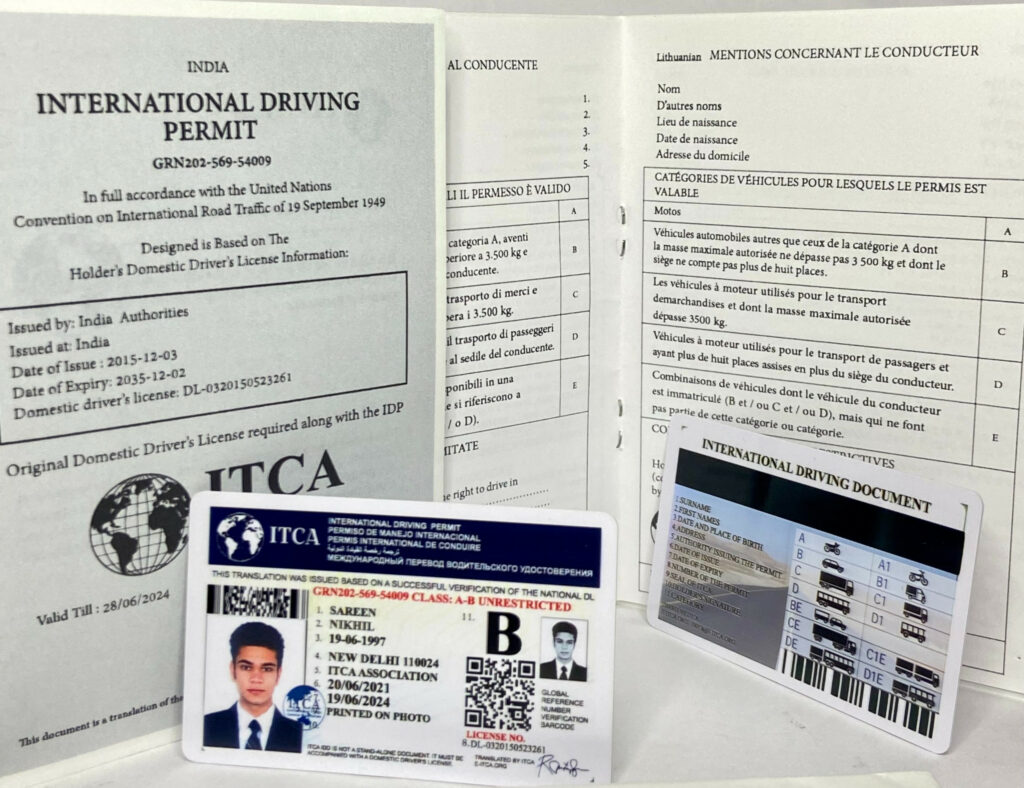
International Driving Permit
Insurance and Coverage Options
While embarking on your Australian adventure, it’s crucial to ensure your journey is secure. Rental rates in Australia typically include the following insurance options:
- Collision Damage Waiver (CDW)
- Theft protection
- Third party liability insurance
This coverage can be purchased at an advance discount.
For added security, renters have the option to purchase Personal Effects Protection and Personal Accident Insurance.
The basic CDW does not typically cover certain types of damage, like windscreens, tyre punctures, or undercarriage damage. If you want more comprehensive coverage, Full Protection (Super CDW) packages can offer savings by bundling Excess Waiver, Roadside Assistance, and zero deductible excess.
Australia car hire excess cover, also referred to as standalone car hire insurance, helps renters by reducing the claim payment amount in the event of an insurance claim. The excess amount for rental cars in Australia typically ranges from $3,350 to $9,000, which varies depending on the rental company and vehicle type. Understanding these options ensures you’re adequately covered during your trip.
While SCDW may double your rental cost, CarInsuRent’s car hire excess insurance for Australia stands out as a favorable choice for several reasons:
- Comprehensive Coverage: CarInsuRent offers extensive coverage for car hire excess, providing you peace of mind. This insurance covers expenses related to windscreen damage, theft, misfuelling, breakdown, and towing, up to a generous limit of US$ 4,500.
- Cost Savings: By opting for CarInsuRent’s Car Hire Excess Insurance, you can avoid overpaying at car hire desks abroad. Booking this insurance online before traveling ensures competitive rates and helps save money in comparison to purchasing excess coverage directly from rental companies.
- Ease of Booking: The process of booking our Car Hire Excess Insurance is straightforward and can be conveniently completed online before embarking on the trip. This simplicity ensures a hassle-free experience for you, allowing you to focus on enjoying their journey.
- Positive Reviews: CarInsuRent’s Car Hire Excess Insurance has garnered positive reviews from satisfied customers, highlighting its reliability and effectiveness in providing coverage during car rentals abroad. Such testimonials from previous users attest to the quality and value of this insurance option.
Compare and Buy Car Hire Excess Insurance for Australia
Get StartedMandatory Insurance Policies
In Australia, Compulsory Third Party (CTP) insurance, also known as the ‘Green Slip,’ is mandatory for all vehicles. This insurance provides compensation for bodily injuries and deaths from accidents involving your vehicle, including coverage for: drivers, pedestrians, cyclists and motorcyclists.
Rental car agreements in Australia commonly include third-party damage cover, which is typically part of the rental price. Basic insurance usually comes included in car rental quotes, but supplementary coverage for higher protection can incur additional fees.
Rules of the Road in Australia
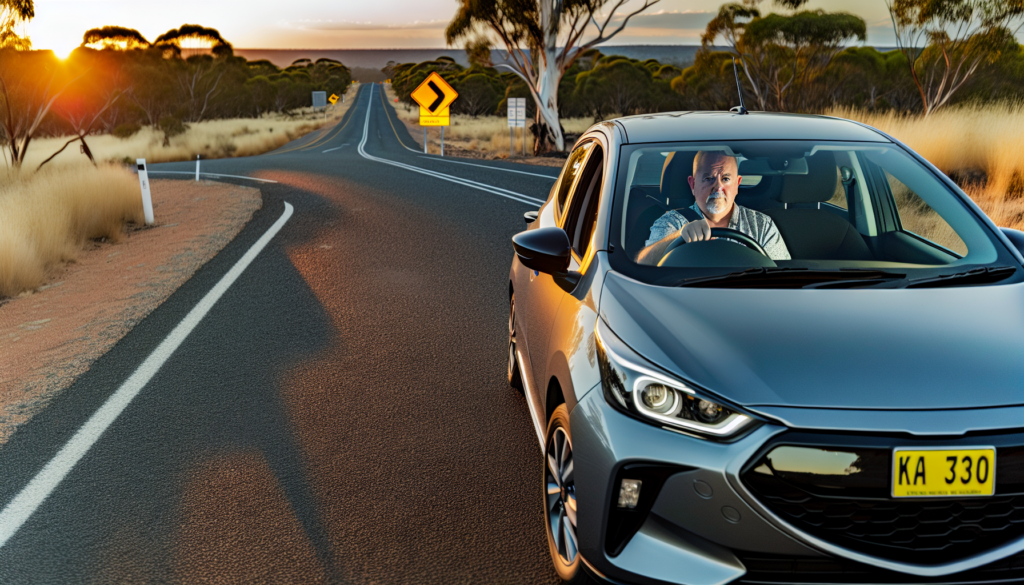
Driving on the left side in Australia
Driving in Australia is an exciting experience, but it also requires adherence to certain rules. Here are some important rules to keep in mind:
- All occupants in a vehicle are required to wear a seatbelt while the vehicle is moving.
- Handheld mobile phone use is prohibited while driving.
- U-turns at traffic lights are not permitted unless there’s a sign indicating it is allowed.
- At unmarked intersections, drivers must give way to the right.
- The legal blood alcohol limit for drivers in Australia is 0.05%.
These rules are in place to ensure safety on the roads.
In Australia, drivers are required to drive on the left side of the road. Traffic signs and signals are designed for left-hand driving, which tourists must become accustomed to. The standard speed limits in Australia are 50 km/h in urban areas, 100 km/h on rural roads, and up to 110 km/h on some highways. Speed limits in school zones are reduced during school hours, generally to 40 km/h or 25 km/h in South Australia.
Driving on the Left Hand Side
Tourists from countries where driving is on the right side must adjust to driving on the left in Australia, with the driver positioned close to the center of the road. The accelerator and brake pedals are positioned the same as in right-hand drive vehicles, but other controls like indicators and windscreen wipers may be located on the opposite side of the steering wheel.
While driving in Australia, it is important to follow these rules:
- Regular driving should be in the left lane.
- Overtaking is done on the right side, adhering to the keep-left rule.
- When approaching a roundabout, move in a clockwise direction.
- Give way to all traffic coming from the right.
- Properly select the lane for your intended direction before entering the roundabout.
Manual transmission drivers will need to get used to changing gears with their left hand instead of the right, a reversal that necessitates some practice to master.
Understanding Speed Limits and School Zones
Speed limits in Australia are enforced to ensure road safety, and drivers must adhere to them. The limits vary depending on the area, with standard limits of 50 km/h in urban areas, 100 km/h on rural roads, and up to 110 km/h on some highways. Additionally, school zones have reduced speed limits during school hours, generally to 40 km/h or 25 km/h in South Australia. On public holidays, these school zone speed limits are not applicable.
The signs indicating these school zones are clear and easily visible, ensuring drivers can adjust their speed accordingly. Breaching these speed limits can result in heavy fines, so it’s always best to stay within the limit and ensure everyone’s safety on the roads.
Tips for a Smooth Rental Experience
To ensure a smooth rental experience, it’s crucial to inspect the car and take photos before leaving the rental lot, and do the same upon return with a staff member. This practice can help you avoid disputes about the car’s condition. Moreover, asking for a written statement from the car rental staff that acknowledges the car’s condition upon return can provide an extra layer of security.
Before setting off, perform vehicle checks such as tire pressure and tread, windscreen wash levels, and wiper condition, and ensure the vehicle is suitable for the intended route. Also, plan for contingencies such as flash floods, roadblocks, detours, and vehicle breakdowns. Carry a repair kit, spare tires, and know how to use them.
Always remember to return the car full of fuel to avoid additional charges, taking into account the rental company’s fuel policy. Using tools such as those offered by momondo can help you filter for fair fuel policies on car rentals.
Fuel Policy Insights
Fuel policies vary among rental companies and understanding them can help you avoid unexpected charges. Some companies offer a ‘Free Tank’ policy, eliminating fuel charges entirely, though these offers are infrequently available.
The most common policy is ‘Full to Full’, where renters are required to return the car with the same amount of fuel as when it was collected. If the tank is not full upon return, a fee may be applied against the deposit made for petrol. So, to prevent incurring a refuelling fee, ensure you return the car with a full tank of petrol, especially under the ‘Full to Full’ policy.
Parking Know-How
Understanding parking rules in Australia can help avoid fines and make your trip more convenient. Here are some important rules to keep in mind:
- Always check the parking signs for the time limit (e.g., ‘1P’ means 1 hour) and ensure not to park beyond this time limit.
- For metered parking, you must pay for parking where signs include ‘meter’ or ‘ticket’.
- There is a maximum time limit for parking at a meter in major Australian cities of up to 2 hours.
When parking in a Permit Zone, it is mandatory to display the correct type of permit as stated on the parking sign. On public holidays, parking conditions can differ, with signs stating specific weekdays not applicable, allowing for unrestricted parking with no fee.
Planning Your Journey: Routes and Destinations
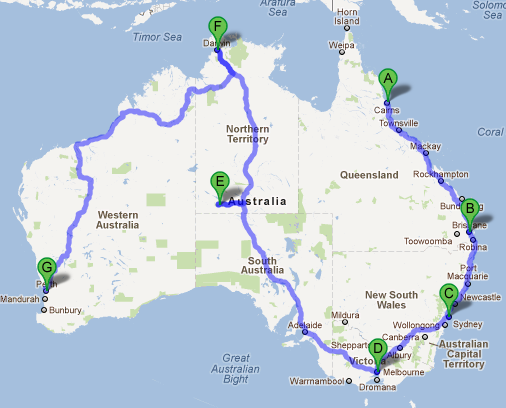
Popular driving routes and destinations in Australia
Australia offers a treasure trove of scenic drives and stunning landscapes to explore. Whether it’s the iconic Great Ocean Road, the picturesque Legendary Pacific Coast drive, or the mesmerizing Great Barrier Reef Drive, the country has something to offer every type of traveler.
For those seeking an outback adventure, Explorer’s Way offers a journey from Adelaide to Darwin, through South Australia’s Flinders Ranges to the iconic red landscapes around Uluru in the Northern Territory. The journey between Perth and Esperance in Western Australia includes pristine beaches such as Lucky Bay where beach-going kangaroos are a common sight.
Tasmania’s circular route and Great Eastern Drive offer scenic spots like Freycinet National Park, Wineglass Bay, and Cradle Mountain-Lake St. Clair National Park, showcasing the island’s natural beauty.
Coastal Drives and Scenic Routes
The Australian coastline offers an array of scenic drives, each showcasing unique landscapes. Some of the iconic drives include:
- The Great Alpine Road in Victoria, which takes you through a 303-km journey filled with mountains, valleys, and historical towns, providing a path to the Australian Alps.
- The drive from Sydney to the South Coast, where you can enjoy the iconic Sea Cliff Bridge and its dramatic views over the Pacific Ocean.
- The scenic coastal routes of the Yorke Peninsula in South Australia, which lead to the natural splendor of Innes National Park.
These drives offer breathtaking views and a chance to explore the beauty of Australia’s coastline.
The Great Barrier Reef Drive is a distinguished route that skims along two World Heritage-listed sites, featuring stops like Port Douglas and Mossman Gorge. These coastal drives can be seamlessly incorporated into a traveler’s itinerary, offering a mix of adventure, cultural experiences, and relaxation while discovering the natural beauty of Australia with the flexibility and freedom of a rental car.
Remote Area Travel Precautions
Traveling in remote areas demands thorough planning. For off-road travel in remote areas of Australia, four-wheel-drive (4WD) vehicles are recommended. These vehicles can handle unsealed roads, but they can be expensive, with daily rates starting at $150 plus insurance. They often require the driver to accept liability for certain damages. Insurance policies might include territorial restrictions, excluding coverage for specific areas or when driving on unsealed roads, potentially invalidating the policy.
Traveling across the Nullarbor Plain or the Gibb River Road requires specific preparations, including:
- Carrying extra petrol and water, given the scarcity of facilities and the sheer remoteness of these areas
- If stranded, remain with your vehicle as it offers better visibility and protection, increasing the chances of being located by rescue teams
- Implement a monitoring system with regular check-ins every two hours to keep someone informed about your location and progress during the journey
Booking Your Rental Car: Reservation Tips
To make the most of your car rental experience, it’s essential to plan ahead. Here are some tips to help you:
- Book a rental car well in advance to secure better rates and take advantage of early booking discounts or promotional offers.
- Consider the duration of the rental and timing of the trip. Longer rentals often attract better rates, and off-peak travel can lower rental costs.
- Compare deals from various travel platforms with those available directly from car rental companies to capitalize on cost-saving bundles.
By following these tips, you can ensure a smooth and cost-effective car rental experience.
Understand the rental contract before arrival and be aware of all exclusions, the COVID cancellation policy, and other pertinent terms. Reviewing the rental agreement’s terms and conditions helps prevent unexpected fees from fuel policies, kilometre limits, and additional driver fees. You can avoid premium location surcharges by choosing to pick up the car from a city location rather than the airport when it is more cost-effective.
Comparing Prices and Latest Offers
Comparing different car rental companies using online tools can help find the most competitive rates and reliable service. Using resources such as momondo not only saves time and money by searching thousands of car rental websites and locations but also offers the convenience of free cancellation on deals. Rental rates can vary depending on the time of year, with higher rates during peak periods such as summer holidays or school breaks, and lower during off-peak times.
Booking a rental car well in advance can secure better rates, taking advantage of early booking discounts or promotional offers. Direct booking with car rental companies can offer cost-saving bundles and subscribing to their newsletters can lead to exclusive deals and savings.
Making the Most of Online Booking Tools
Today’s technology makes it easier than ever to book a rental car. Online car rental booking tools offer the following benefits:
- Real-time availability management
- User-friendly interfaces to enhance the customer experience
- Integrated solutions, including both websites and mobile apps, for more efficient management of bookings and vehicle updates
These features make the process of booking a rental car quick and convenient.
Accessibility and management flexibility are greatly enhanced by cloud-based booking systems, which allow operations to be managed from multiple devices and locations.
Additional Services and Amenities
To enhance your rental experience, car rental providers offer various additional services and amenities. These may include GPS systems, infant car seats, and other safety-related add-ons available for an extra charge. There may be additional fees for adding extra drivers to the rental contract, allowing multiple individuals to share driving duties during the rental period.
These add-ons can significantly enhance the safety and convenience of your rental experience.
Navigational Assistance
GPS navigation systems are offered as an optional add-on by rental car companies in Australia, with varying costs depending on the rental provider and location. Having a GPS can help you navigate unfamiliar roads and reach your destinations with ease.
However, considering GPS systems are not standard with car rentals and may incur extra charges, using a personal phone or tablet for navigation could be a more cost-effective option if you have a reliable data plan.
Comfort and Convenience Add-Ons
Car rental companies in Australia offer additional rental options such as child seats, roof racks, and ski chains for the convenience of customers. These amenities can enhance your rental experience, especially if you’re traveling with a family or carrying extra luggage or sports equipment. Luxury amenities such as high-end sound systems and sunroofs can also be requested for an enhanced driving experience.
Child safety seats are designed to ensure that young passengers are safely secured throughout the journey, adhering to Australian safety regulations. Roof racks provide additional storage space, making it easier for travelers to carry extra luggage or sports equipment. Renters can enhance their driving experience in Australia with convenience packages that include prepaid fuel, toll passes, and additional driver coverage. These add-ons can usually be reserved at the time of booking the rental car, either online or at the rental desk.
Summary
Renting a car in Australia offers a unique way to explore the country’s stunning landscapes, vibrant cities, and picturesque coastal routes. Understanding your rental options, the rules of the road, and the essential requirements can make your journey smoother and more enjoyable. With careful planning, a bit of research, and an adventurous spirit, your Australian road trip can become an unforgettable experience.
Frequently Asked Questions
Can foreigners rent a car in Australia?
Yes, as a foreigner, you can rent a car in Australia with a full driver’s license or an international driving permit if your license is not in English. It is generally required that the driver’s license is in English or accompanied by an international driving permit.
What are the rules for renting a car in Australia?
In order to rent a car in Australia, you need to be at least 21 years old, have held your license for a minimum of one year, and may be subject to a young driver surcharge if you are under 25. Ensure you meet these requirements before renting a car.
Is it expensive to rent a car in Australia?
Renting a small car in Australia can vary in price, with February being the cheapest month at around $37 a day, while December is the most expensive with prices starting from $71 a day.
How old do you have to be to rent a car in Australia?
To rent a car in Australia, you must be at least 21 years old. Additional age restrictions may apply for specific car categories, and drivers must have held their license for a minimum of one year. Keep in mind that drivers under the age of 25 may incur a young driver surcharge, leading to an additional fee to the daily rate.
What is the standard insurance coverage for car rentals in Australia?
Car rental insurance in Australia usually includes fire and third-party liability insurance, as well as collision and/or theft coverage.
Travel Tips and Guides
Frequently Asked Questions (FAQ)
No. We provide a single journey plan. You are covered from the time you pick up the rental car up to the time you return it or on the last date written on your Certificate of Insurance, whichever comes first.
No. You should purchase a policy before starting your travel.
Find the answers you’re looking for to the most frequently asked car hire insurance questions as well as other questions relating to our products and services.
